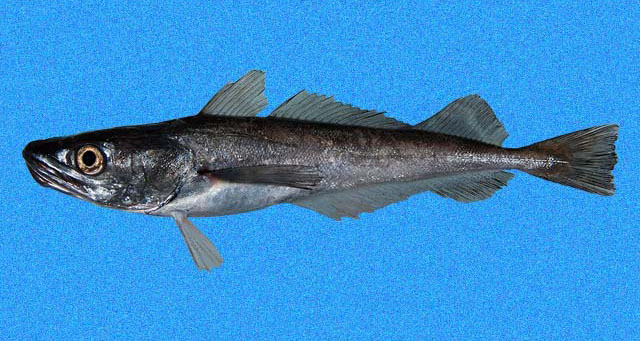| Merlucciidae (Merluccid hakes) |
| 40 cm TL (male/unsexed) |
|
demersal; marine; depth range 80 - 523 m, non-migratory |
| Eastern Pacific: off the west coast of the Americas from Del Mar, California to Ensenada de Tumaco, Colombia. Vrooman and Paloma's (1970) dwarf hake off the coast of Baja California has recently been described as a different species, Merluccius hernandezi Mathews, 1985. |
|
Dorsal spines (total): 1-1; Dorsal soft rays (total): 45-52. Head rather long, about 30% of SL. Gill rakers long and slender, with pointed tips. Pectoral fins long, the tips reaching to or beyond the origin of the anal fin. Overall color silvery, lighter ventrally. |
| Occurs from shallow continental shelf to the upper continental slope, and in the mid-waters of the open sea and on sea-mounts (Uncle Sam Bank). Exploited only on a local level due to its abundance and its relatively small median size (Ref. 9119). Minimum length of first sexual maturity for both sexes is 18-19 cm, and spawning occurs from April to June, or later (Ref. 58452). |
|
Least Concern (LC); Date assessed: 01 May 2008 Ref. (130435)
|
| harmless |
|
Source and more info: www.fishbase.org. For personal, classroom, and other internal use only. Not for publication.

